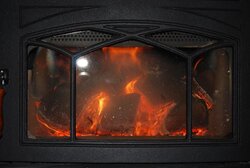I have learned alot by reading your forums lately and was wondering how much more heat these new units put out compared to older inserts. I have been shopping around and really like the Hampton HI300 for its looks and btu's. But how much heat is 75,000 btu's compared to older inserts like the Black Barts, etc. A new HI300 costs a lot more than a used Black Bart. And isn't part of the game to same dollars on the heating bill?
Thanks for any input.
Thanks for any input.


